
How much do dogs sleep?
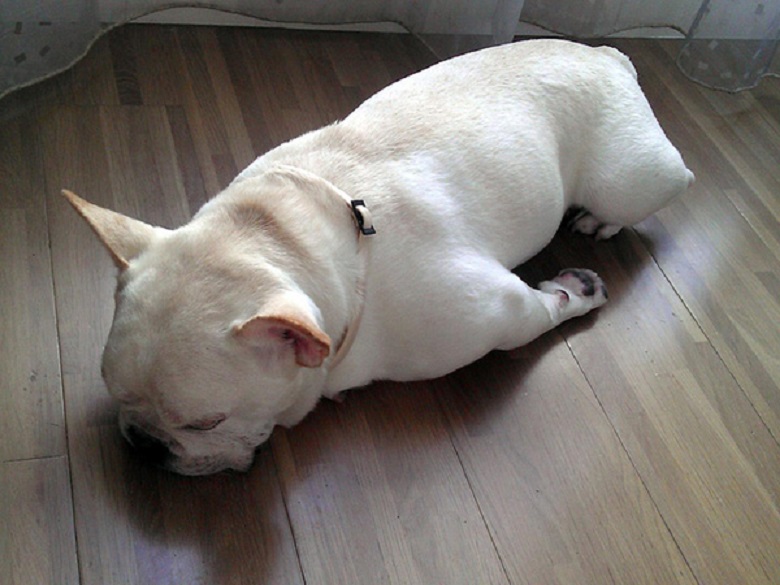
If you’re a dog parent, you know they love to sleep. But why do they sleep so much, and are they really dreaming when you see their paws twitch in their sleep?
Keep reading to discover the answers to these questions and more.
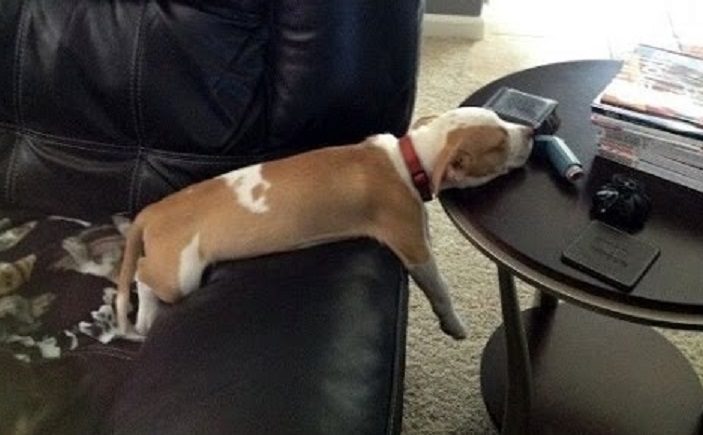
How much do dogs sleep?
On average, dogs spend 12 to 14 hours per day sleeping. Your dog’s particular sleep needs may vary around that range, depending on his age, size, breed, activity level, and overall health:
Larger breeds tend to sleep more than smaller breeds.
Working dogs with activity-filled days sleep less, while those who lead sedentary lives will sleep more.
Puppies can spend up to 20 hours sleeping a day. Growing and learning how to be a dog takes a lot of energy!
As dogs age into their senior years, they spend more time sleeping since they tire more easily.
Wild dogs and wolves may sleep even more than domesticated dogs. They have to hunt for their food, which expends more energy. When food is scarce, they need to conserve their energy. An expedient way to do that is by sleeping.

Do dogs experience the same sleep cycles as humans?
Like humans and other mammals, dogs progress through different stages of sleep. Also like us, dogs experience REM sleep.
The main difference between dog sleep and human sleep is how much time they spend in the different stages, as well as a dog’s tendency to sleep in bursts throughout the day. Dogs tend to experience sleep-wake cycles of 16 minutes asleep, 5 minutes awake – quite the contrast with our typical sleep-wake cycle of 7 to 9 hours asleep, 15 to 17 hours awake.
When dogs fall asleep, they enter deep sleep. Their breathing and heart rate slow while their blood pressure drops. About 10 minutes in, they enter REM sleep and dream like humans. You can often identify this stage because their eyes roll under their eyelids, and they may start twitching in their sleep as they dream of chasing after squirrels.
Since dogs are always on the alert to protect their pack from intruders, they’re able to wake more easily. It’s common for them to wake up before completing a full sleep-wake cycle, from deep to REM sleep. As a result, scientists estimate they need to sleep more often overall in order to get their sufficient amount of REM.
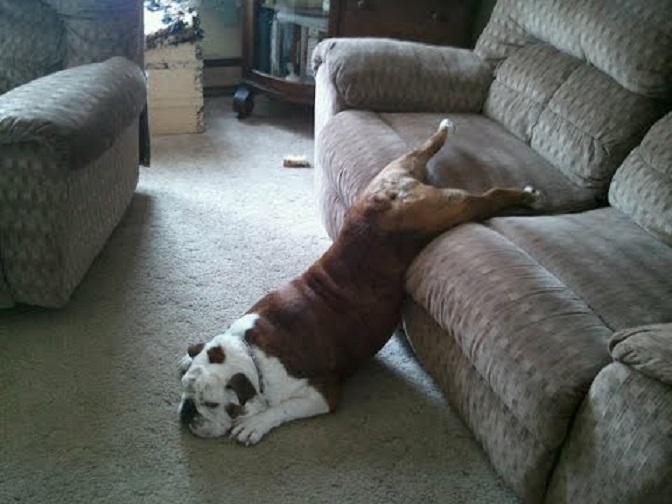
What does a day in the life of a dog look like?
The typical dog spends half of his day asleep, and nearly a third of his day just lying around. The rest of his day is reserved for playing, using the restroom, and begging for treats.
Dogs are flexible sleepers. They have no problem adjusting their sleep schedule to their owner’s needs. If you work a 9 to 5 job, your dog may adapt to spend more of the daytime sleeping, so he can be awake and available to play with you when you get home at night. Working dogs like police or service dogs have more energy, and can stay awake for longer stretches of time performing their important duties.
Dogs don’t sleep as deeply as we do. That’s why they can wake up immediately if necessary and bound out of bed to raise the alarm for an intruder or gobble up the kibble as you pour it.
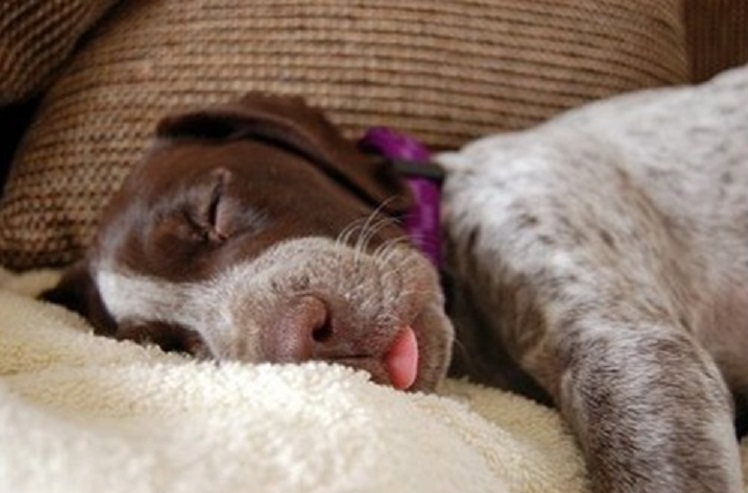
When is my dog sleeping too much?
If you note drastic changes in the amount of time your dog spends sleeping, or he seems excessively lethargic, it could be indicative of a larger problem. Lethargy is a common symptom of diabetes, parvovirus, Lyme disease, depression, and hypothyroidism in dogs.
If a major upset occurs in the life of your dog, such as the death of a loved one or a big move, he may sleep more or less than usual. This is a normal reaction, as dogs find comfort in routine and a major change affects their emotional wellbeing, but keep an eye out if their sleep doesn’t return to normal within a reasonable amount of time.
Some dogs with shorter noses are also at risk for sleep apnea, which can make your dog more tired during the day due to experiencing less restful sleep.

What are the common dog sleep positions?
Does your dog have a favorite sleeping position? Dogs tend to sleep in one of three positions, and they have a reason why for each.
On their side with four legs stretched out: This is a comfortable position for your dog when he’s feeling very relaxed. It also exposes some of his belly to the air which can help him cool down.
On their back with all four paws in the air: When a dog is in this position, he’s at his most vulnerable. It’s the toughest for him to get up from and it exposes his neck and belly. If you catch him in this position, you know that he feels safe and secure. It’s also a good way for him to cool down since his belly is exposed.
Curled in a ball: This is the least comfortable position for a dog to sleep in, as it requires them to use their muscles to stay curled up. However, it is the easiest for them to spring up upon waking, making it a defensive position. Dogs who have been abused or are unsure of their environment often sleep in this position. However, sometimes dogs sleep curled up simply to keep warm.
Your dog may sleep in any of these positions with their back to you, or another human or animal member of the pack. In dog packs, dogs sleep to each other for comfort and safety, so consider this a high honor. Your dog views you as part of the pack!
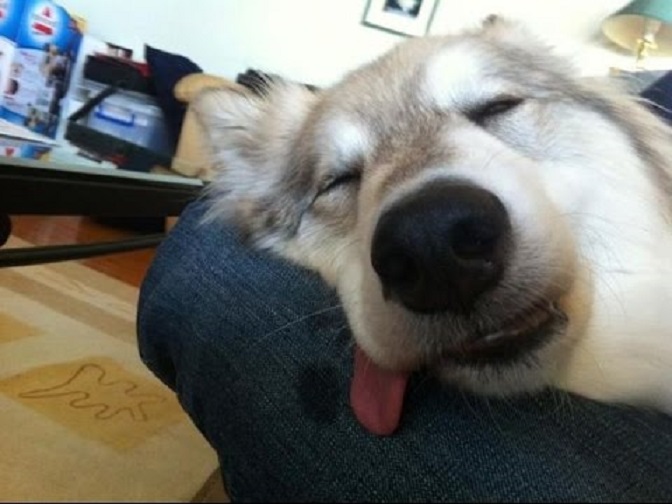
How can I help my dog get better sleep?
Follow these tips to give your pup more restful shuteye.
1. Give your dog plenty of exercise and playtime during the day to stimulate his mind and tire him out by bedtime.
2. Feed your dog well. Some pet foods contain fewer nutrients than others, which can lower your dog’s energy during the day.
3. Don’t miss your vet check-ups. These regular appointments are a good way to identify any health conditions early on.
4. Give your dog a comfortable place to sleep.

If you choose to share your bed with your dog, like nearly half of dog owners do, make sure you get a mattress that’s big enough for everyone to fit, and offers excellent motion isolation so you’re not woken up by them moving around. Memory foam and latex mattresses are good options for pet owners.
If you prefer your dog sleeps in a kennel or dog bed, make it cozy like a den would be in the wild. Give them a blanket or even a dirty old t-shirt that smells like you to provide comfort. There are various dog beds available to suit your dog’s favorite sleep positions – big ones made for stretching out vs. small nesting beds for those who like to curl up.
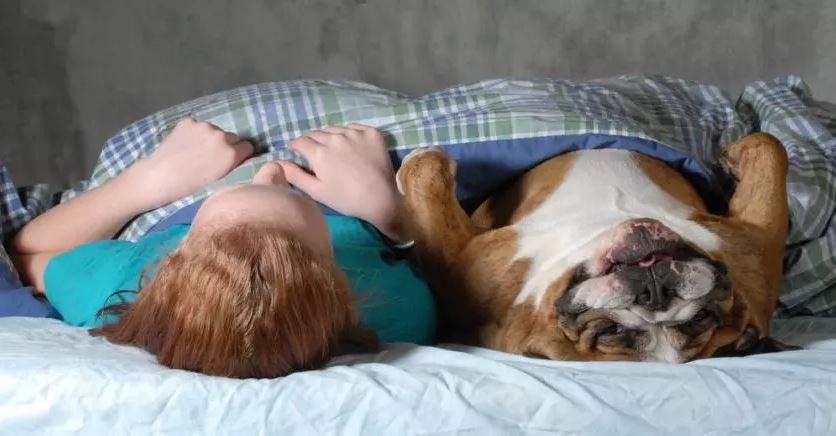
Source
"Tuck - Advancing Better Sleep "
Our Mobile Application
Check out Our Mobile Application "Dog Breeds Central"
